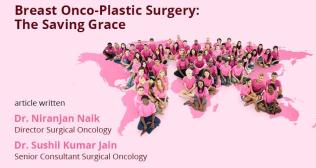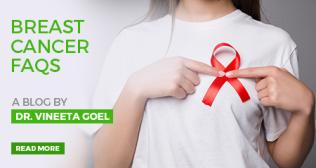
Link Between Oral Cancer and Tobacco Consumption: Unveiling Diagnosis, Treatments, and Preventive Measures!
Advertisements regarding the harmful effects of tobacco are showcased in movie theaters to spread awareness about its potential to cause oral cancer. Let us analyze some statistics to better understand the link between tobacco consumption and oral cancer.
Epidemiology of oral cancer
Oral cancer is the sixth most prevalent cancer worldwide, with India accounting for one-third of the cases. Consumption of tobacco in various forms, such as gutka, mawa, khaini, cigarettes, bidi, etc., is the main cause of tumors in youth as well as adults. Among the 250 recognized harmful chemicals in tobacco smoke, approximately 69 (such as hydrogen cyanide, arsenic, chromium, etc.) can cause cancer.
The most common locations for oral cancer include the tongue, floor of the mouth and lower lip. Let’s find out more about oral cancer, including its symptoms, types, diagnostic methods, treatment, and breakthrough research aimed at addressing the issue.
Symptoms of oral cancer
Cancer caused by smokeless tobacco often manifests as whitish patches that form inside the mouth or throat (leukoplakia). Other signs and symptoms of oral cancer include:
- Irritation accompanied by a sore, lump or thick patch in the mouth, lip, or throat.
- A red patch in the mouth
- Difficulty swallowing (dysphagia)
- Pain or bleeding in the mouth
- Numbness in the tongue and other parts of the mouth
- Bulging of the jaw, which leads to dentures fitting poorly and causing discomfort.
- Mouth ulcers that persist for more than three weeks
Types of oral cancer associated with tobacco use
Tongue cancer
Some common signs of tongue cancer include an ulcer or a painful bump on the tongue. Dark patches can also appear, which don’t fade for days. Treatment for tongue cancer includes radiation and surgery.
Cheek cancer
Also known as cancer of the buccal mucosa, it’s characterized by pain and ulceration. This rare form of cancer develops in the inner cheek and is often treated with surgery.
As oral cancers can spread rapidly, early detection is crucial to reduce mortality rates.
Techniques for diagnosing oral cancer
There’s an increasing demand for the development of diagnostic methods that are non-invasive, rapid, and easy to use. In India, self-examination is regarded as one of the most effective approaches for the early diagnosis of oral malignancy. Some common techniques for detecting oral cancer are as follows:
- Physical examination is considered the primary and most critical assessment for oral cancer. It usually consists of two steps: systematic visual examination and palpation (using the hands or fingers to examine the body).
- Biopsy is also used to diagnose oral cancer. In this method, a healthcare professional takes a tissue sample from the affected area for analysis under a microscope. Contact endoscopy can also help in performing the procedure effectively.
- Several advanced imaging methods are utilized for the diagnosis of oral cancer. Among these, the most used scanning techniques include computed tomography (CT), magnetic resonance imaging (MRI) and positron emission tomography (PET).
- Oral microbial biomarkers are a non-invasive and effective method that’s currently used to predict the recurrence of oral squamous cell carcinoma (OSCC).
Apart from these techniques, nanobiosensors-based lateral flow immunosensing has revolutionized the domain of diagnostics, offering enormous potential for the enhancement of oral cancer diagnosis. In addition, integrating artificial intelligence-based tools in the clinical setting can also be a game-changer.
Staging of oral cancer
The earliest stage of oropharyngeal cancer is referred to as stage 0 (carcinoma in situ). The subsequent stages range from I through IV, indicating the extent to which the cancer has spread. The lower the stage, the less the cancer has metastasized, and vice versa.
Treatments for oral cancer
The treatment approaches for oral cancer comprise surgery, chemotherapy, radiotherapy, targeted medications, and immunotherapy. Additionally, the use of nanoplatforms (drug delivery systems) to treat the disease enables the medications to accurately target the tumor cells, reducing side effects. This has paved the way for breakthrough treatment approaches to treat oral cancer.
Ways to prevent oral cancer
Some measures to keep oral cancer at bay include:
- Maintaining good oral hygiene
- Avoiding tobacco
- Avoiding alcohol consumption
- Ensuring regular dental check-ups
- Maintaining a healthy lifestyle and incorporating colorful veggies and fruits into the diet.
Those experiencing persistent oral problems should immediately reach out to the dentist or relevant healthcare professional to seek medical attention.



















